A Painting Cycle | Conversation with Julia Schmidt
 Julia Schmidt, Lavoro (lexicon of painting), (detail), 2011. Installation view, Nomas Foundation, Rome. Courtesy Casey Kaplan Gallery, New York and Meyer Riegger, Karlsruhe/Berlin. Ph. Giuliano Pastori
Julia Schmidt, Lavoro (lexicon of painting), (detail), 2011. Installation view, Nomas Foundation, Rome. Courtesy Casey Kaplan Gallery, New York and Meyer Riegger, Karlsruhe/Berlin. Ph. Giuliano Pastori
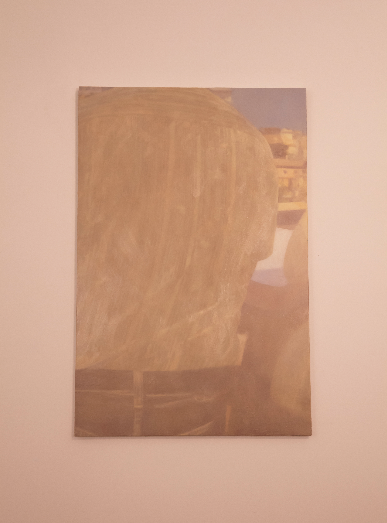 Julia Schmidt, Untitled (tourist), 2011. Installation view, Nomas Foundation, Rome. Courtesy Casey Kaplan Gallery, New York and Meyer Riegger, Karlsruhe/Berlin. Ph. Giuliano Pastori
Julia Schmidt, Untitled (tourist), 2011. Installation view, Nomas Foundation, Rome. Courtesy Casey Kaplan Gallery, New York and Meyer Riegger, Karlsruhe/Berlin. Ph. Giuliano Pastori
 Julia Schmidt, Untitled (Ufficio Postale), 2012. Installation view, Nomas Foundation, Rome. Courtesy Casey Kaplan Gallery, New York and Meyer Riegger, Karlsruhe/Berlin. Ph. Giuliano Pastori
Julia Schmidt, Untitled (Ufficio Postale), 2012. Installation view, Nomas Foundation, Rome. Courtesy Casey Kaplan Gallery, New York and Meyer Riegger, Karlsruhe/Berlin. Ph. Giuliano Pastori
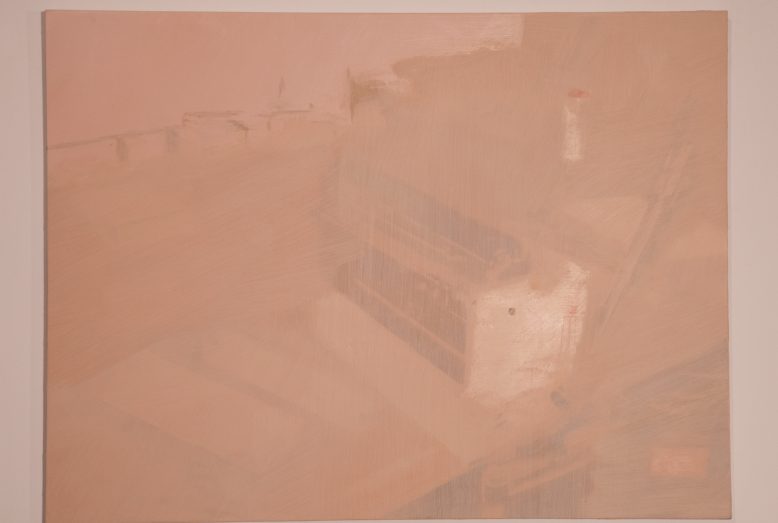 Julia Schmidt, Untitled (basement) II, 2010. Installation view, Nomas Foundation, Rome. Courtesy Casey Kaplan Gallery, New York and Meyer Riegger, Karlsruhe/Berlin. Ph. Giuliano Pastori
Julia Schmidt, Untitled (basement) II, 2010. Installation view, Nomas Foundation, Rome. Courtesy Casey Kaplan Gallery, New York and Meyer Riegger, Karlsruhe/Berlin. Ph. Giuliano Pastori
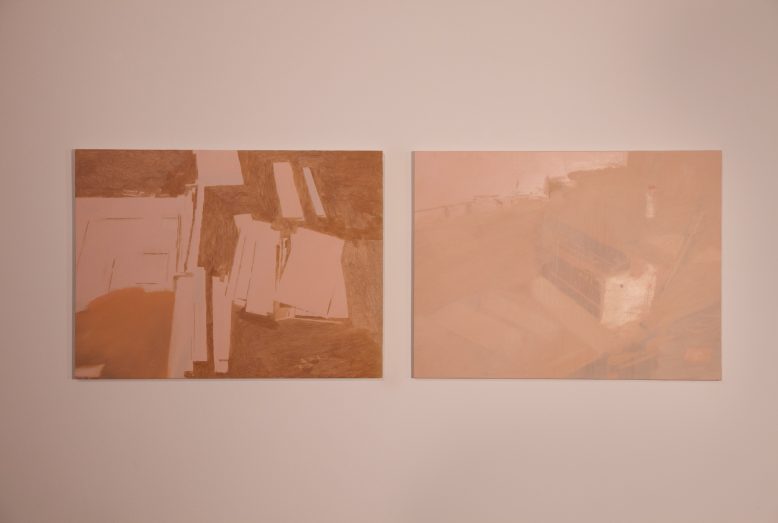 Julia Schmidt, Untitled (basement) I + II, 2010. Installation view, Nomas Foundation, Rome. Courtesy Casey Kaplan Gallery, New York and Meyer Riegger, Karlsruhe/Berlin. Ph. Giuliano Pastori
Julia Schmidt, Untitled (basement) I + II, 2010. Installation view, Nomas Foundation, Rome. Courtesy Casey Kaplan Gallery, New York and Meyer Riegger, Karlsruhe/Berlin. Ph. Giuliano Pastori
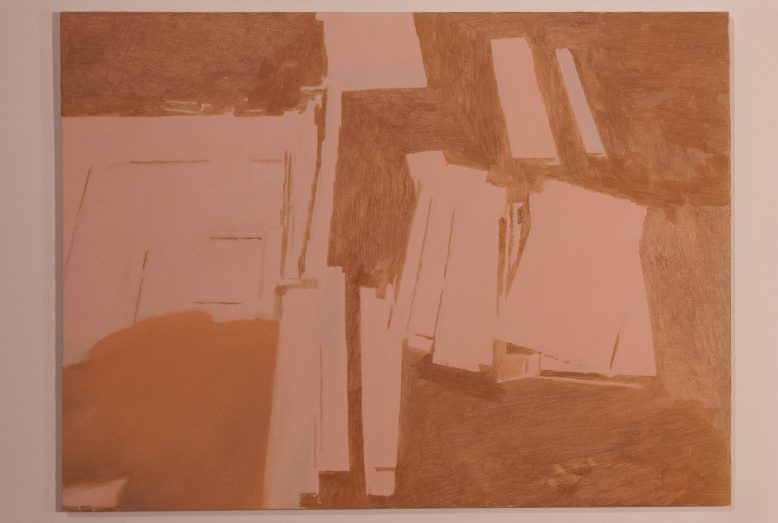 Julia Schmidt, Untitled (basement) I, 2010. Installation view, Nomas Foundation, Rome. Courtesy Casey Kaplan Gallery, New York and Meyer Riegger, Karlsruhe/Berlin. Ph. Giuliano Pastori
Julia Schmidt, Untitled (basement) I, 2010. Installation view, Nomas Foundation, Rome. Courtesy Casey Kaplan Gallery, New York and Meyer Riegger, Karlsruhe/Berlin. Ph. Giuliano Pastori
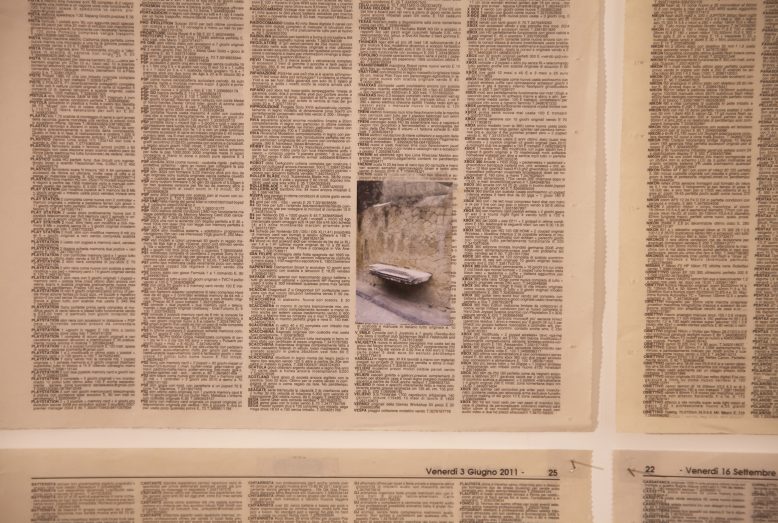 Julia Schmidt, Lavoro (lexicon of painting), (detail), 2011. Installation view, Nomas Foundation, Rome. Courtesy Casey Kaplan Gallery, New York and Meyer Riegger, Karlsruhe/Berlin. Ph. Giuliano Pastori
Julia Schmidt, Lavoro (lexicon of painting), (detail), 2011. Installation view, Nomas Foundation, Rome. Courtesy Casey Kaplan Gallery, New York and Meyer Riegger, Karlsruhe/Berlin. Ph. Giuliano Pastori
March 22nd, 2012
Julia Schmidt works from the picture-material around her, adapting conceptual methodologies and utilizing a range of media and painterly skills. By an insistent filtering of vernacular images, she locates painting within its social reference field. The status and significance of painterly practice are examined against a backdrop of aesthetic, economic and art-historical questions and designations. The painted image is handled as both an aesthetic, seductive surface and as a discursive device.
At Nomas, Schmidt will present a new constellation of works - some of which have been realized during her residency period in Rome at Villa Massimo.
Nomas Foundation: If you were to describe your work through some key words which would you indicate?
Julia Schmidt: Conceptual, contextual, (seductive and) resistant, dialectical, discursive, eclectic, deceptive, processual, abstract, relational.
NF: When did your interest in painting start, and how did you become part of your vocabulary?
JS: I started studying painting at the Academy of Visual Arts in Leipzig in 1995. There I mainly received a technical and formal education. From 1998- 2001 I studied at the Glasgow School of Art. This was quite an influential time for me, and my work developed in a much more conceptual direction. When I think back on who influenced me most there, Iâd say it was probably Richard Wright, simply because he represented the absolute antithesis of a modern, âheroicâ conception of painting, operating on the other hand with extreme reserve and stringency.
NF: Which peculiarities of your research are being pointed out within the works presented on the occasion of âA painting cycleâ?
JS: The body of work presented at Nomas Foundation further investigates my concern with notions of value (and their historical and material shifts), the economic logic of work, implicit and explicit power structures, and with desire and (economic) conflict embedded in the everyday. Untitled (tourist), for example is developed from one of the many photographs I took of the back of a tourist standing on a viewing platform in Romeâs city centre. The panoramic view of the city is blocked out and the focus is on the washed out but originally garish pattern from the man's shirt, on his blue jeans and belt. Only fragments of the scenic surrounding and alluring sky can be seen in the right corner of the image. The outfit is connected to clicheĚs of (male) leisure / vacation wear. The finished painting, mined from its quotidian source, resonates something 'abject' but still has an alluring quality, generated through painterly techniques and the use of colour. This stages an inversion of value designations and a âSchmidt typical' focus on the peripheral. The painting hovers between seduction and resistance, and around embedded thematics relating to notions of kitsch, social position and work/leisure dichotomies.
NF: You often begin working from amateur photographs. Can you speak to us about your working process and reveal the importance of your source materials?
JS: The starting point for a new cycle of work is always an obsessive sifting, editing and excavation of already existing images. Iâm very interested in the idea of presenting research material so a central part of the installation here at Nomas Founadtion is a network of images - a lexicon of painting - assembled on the pages of Porta Portese newspaper ads: banal amateur commerce and a fragmented constellation of everyday images, which are all scenes of trade and barter that reflect rituals of transaction and exchange. The final and finished works, instead are the result of a very labour and time intensive method of painting, layering, erasing, repainting but I like the paintings not to show that effort and just âappearâ in the exhibition.
NF: Subject and conceptual focus of your works is the everyday, the vernacular, those details that are usually ignored and those fragments of the world that are kept away from the sight. Through a sort of inversion of value designation you give visibility to all that is peripheral, thus overturning the original function and subject of painting itself, which has in history been framing the âcentralâ. How are you questioning the idea of value? How is value determined?
JS: : Yes, with the painterly treatment, often value is granted to otherwise worthless objects. The works play with the different valorizations that objects have in various social systems and set attractiveness, fetishization, and economic price structures in a mobile, reflexive exchange relation to one another.
For me the relationship between the motif and the painting itself, its monetary value is very important and there is something about problematizing the viewerâs relationship to the pictures that appeals to me.
Source image-material for Untitled (basement) I, II, for example - another work shown
at Nomas Foundation - is an amateur photography / hobby documentation and provisional depictions of a hobbyistâs workbench. The set of two paintings, varying in degrees of abstraction / realism are extracted from snapshots of an amateur workshop. The paintings generate a range of reference and association around work and freetime, gender-based stereotypes and amateur, artisanal activity on the peripheries of âeconomic systemsâ.